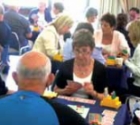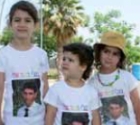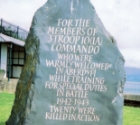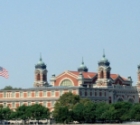
On a beautiful spring afternoon, Sunday May 4th, seven hundred people gathered to celebrate the reunion of Betarim and their families from Southern Africa – ‘Southern’, because historically there were Betar affiliates in South Africa, Zimbabwe and all the way up to the Congo. The event took place in the Jabotinsky Park, on the ridge of the Carmel, overlooking a lush and fertile valley. This venue, with its Roman theater, was a fitting one for the event, given that the area was used by the Irgun in British Mandate times and is now home of the Etzel museum.
The project began in 2006 when an idea was floated by Malcom Finn and then taken up with excitement by Beryl Ratzer and Benny Raphael. Together they gathered an enthusiastic group, willing to participate in the months of hard work, and “started the ball rolling.” Assisted by a large and generous committee, with Morris Strauss as master of ceremonies, Beryl Ratzer as chairperson and Ofakim as the conference organizers the evening was painstakingly put together.
The atmosphere was dominated by nostalgia. The entrance was cleverly lined with dozens of photographs of Betar events taken from as early as the 1930’s – camp sites, groups at formal weekly meetings, seminars and educational get-togethers in different locations throughout Southern Africa. Everyone huddled around the displays, clutching tasty boerewors and hot dog rolls, pointing at more youthful versions of themselves and their long forgotten friends. These pictures were wonderful reminders of the richness and camaraderie of Betar life, as well as the seriousness and fun of it all. There they were, young boys and girls, standing on the muddy ground besides their camp tent, saluting at a parade or sitting in a formal pose on benches, arms folded, dressed in their neatly pressed uniforms.
When greeting unfamiliar faces, eyes turned to the name tag which was given to each guest – large name tags to accommodate the reality of the aging eyesight of participants; “Do I know you?” or “What was your maiden name,” or “I can’t believe it. Fifty years. Amazing.” The photos were a hit and they continue to pour in as interest grows, even now, days after the event.
It was particularly gratifying to note the presence of a large number of participants, nurtured on Betar ideals, who had made an impressive contribution to Israeli society – people in the free professions, academics, professors, industrialists and successful entrepreneurs. There was much for which the Betarim could feel really proud.
Not all of the participants had been Betarists. Some were spouses who till today do not share the political views of an ideology which was largely the precursor of the more right wing Israeli politics. Yet they could look on with envy and admiration at the visible, unbreakable bonds that had been forged in the spirit of and dedication to Zionist ideals. This love and care for their country, nurtured all those years, can be seen in the fact that ninety percent of those who were involved with Betar have made aliyah, enduring the struggles and enjoying the successes of Israel in the sixty years of its independence. Equally impressive was the fact that one hundred of the reunion participants had come from abroad, from as far as Canada, Australia and America, to take part in the celebration.
This was not meant to be a political event but rather one of nostalgia. Some of the ideas expressed in the songs, sung beautifully by the Binyamina choir, might have sounded naïve and outdated, however, that cynicism can be attenuated if one looks at the birth of the Betar movement in an historical context. This was a time of growing persecution of the Jews in a Diaspora threatened by anti-semitism and pogroms. It was Jabotinsky who appreciated the violence that lay ahead and purposefully developed a heroic iconography to provide hope for an alternative life in a historical homeland for the Jews. Many of the songs that were sung were written by Jabotinsky himself, poetic expressions aimed to instill pride and hope.
Included in the Betar ideology was the farsighted knowledge that military power is an essential ingredient for Jewish survival. Jabotinsky wanted to see the birth of a different sort of Jew. Not a meek Jew of the Diaspora, cowering and facing a grim future, but a prince, one who would defend himself and his people in his own land. He gave birth to the idea of Hadar, the self sufficient, responsible and noble Jew, with respect both for himself and for other. Many of these ideas were elaborated in speeches by Morris Strauss, Zeev Bielski, Beryl Ratzer, Yechiel Kadishai and Harry Hurwitz.
The atmosphere of the evening was one of warmth and camaraderie which was bonded by a belief in the Zionist dream – a little bit of Hadar. It was beautifully conceived, planned and executed and many left with the excited notion of another such get-together in years to come.
Ruth Abraham is the author of “When Words Have Lost Their Meaning: Alzheimer’s Patients Communicate Through Art” Greenwood Publications, 2005.
 A “Virtual” tour of Ethiopia
A “Virtual” tour of Ethiopia ESRA Herzliya’s Annual Bridge Morning
ESRA Herzliya’s Annual Bridge Morning Walking for Benji
Walking for Benji (302x450)-1451381711.jpg) Odeon Oscar
Odeon Oscar The Jewish Connection
The Jewish Connection ellis island
ellis island